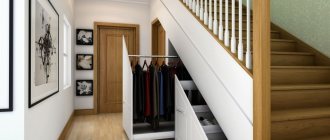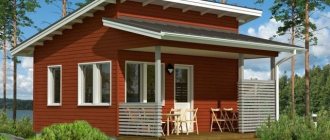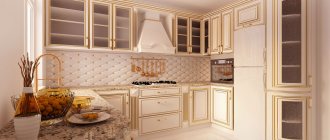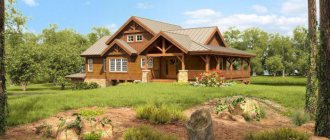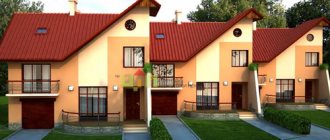In this article:
- Important points in hotel design
- 4 stages of hotel design
- Standards governing hotel design
The hotel is a complex complex. The development of its project requires a special approach. It is necessary to take into account the planning decisions of the number of rooms, lay down the auxiliary and ancillary premises necessary for the operation and maintenance of the hotel.
Hotel design is a complex process in which construction, sanitary, environmental, and fire safety standards established by law must be taken into account. To create a harmonious space, solutions are developed for the appearance and decoration of the facade, and landscaping of the surrounding area.
Reconstruction of existing buildings
The architect’s task in this case is to fit the Customer’s requirements (and new technological processes) into an existing premises that was previously used for a different purpose. The main advantage in this case is a shorter pre-design phase, since the main technical documents were agreed upon during the initial construction stage. Design does not begin from scratch, but with a study of the BTI plan to ensure that the real estate intended for a hotel meets new technological challenges.
The disadvantage is that the architect (designer) has to work within fairly strict limits set by the initial project. However, this option has recently become very popular in large cities due to the shortage of available space for development. Very interesting projects are being implemented, for example, by the management company Cosmos Group. The management company is reconstructing former automatic telephone exchanges (automatic telephone exchanges) and converting them into designer hotels.
If we talk about the reconstruction of former residential or office buildings, then the greatest difficulty is presented by standard panel houses. The reason is a large number of load-bearing structures that cannot be touched due to the threat of their collapse. In this regard, it is easier to carry out radical redevelopment of objects in monolithic and brick houses. Accordingly, they, other things being equal, are more preferable for the developer.
Calculation of profitability and payback
Let's find out how much you can earn in business. The amount of initial costs is 6.420 million rubles. When calculating turnover, we will proceed from the average license plate load of 70% and the average cost of 1 number of 2,500 rubles. Monthly turnover will be: 2500×11×30=825 thousand rubles, income from additional services – another 250 thousand rubles. The total monthly costs are 700 thousand rubles. Net profit is 375 thousand rubles. Under these conditions, the business will reach zero in about a year and a half. Let's add another 12 months for the promotion of the enterprise, and we get 29 months.
Table 3. Economic justification for the business idea.
| Basic indicators | Meaning |
| Initial investment amount | RUB 6.420 million |
| Monthly expenses | 700 thousand rubles. |
| Average download percentage | 70% / day |
| Monthly income | 1075 thousand rub. |
| Net profit per month | 375 thousand rubles. |
| Payback period | 17 months (29 months) |
We can say that where the imagination of the architect and designer is applied, compliance with certain standards fades into the background (or becomes completely impossible).
However, hotels with an original architectural design, relatively speaking, advertise themselves. For example, in Kabardino-Balkaria there is a capsule eco-hotel LeapRus. It is located on the southern slope of Elbrus and is one of the highest tourist accommodation facilities in the world (3912 m). The rooms have a work desk, flat-screen TV and a terrace with mountain views, and some also have a kitchen with a refrigerator. Other examples when an interesting location automatically becomes a “feature” that attracts tourists in a cave (Cuevas Pedro Antonio de Alarcon, Spain), in a tree (Free Spirit Spheres, Canada), in pipes (Tubo Hotel, Mexico), on an airplane (Jumbo Stay , Sweden).
Purchasing a finished project: pros and cons
At the initial stage, the owner of the future hotel makes a decision for himself: to purchase a ready-made project or develop an individual one? This question arises especially often during the construction of small and mini-hotels. Both options have their pros and cons. In the first case, you do not have to spend money and time on developing design and estimate documentation. In addition, you can find quite a lot of high-quality options on the Internet; all you have to do is order their detailed transcript. However, you should understand that ready-made projects do not take into account the topography of a particular site, as well as its climatic features and your financial capabilities.
Premises
The design of hotels in general and hotel rooms in particular should be done by a “hotel” architect, since he knows the intricacies of industry business processes.
The premises, even in an average-sized accommodation facility, include guest rooms of various categories, warehouses, administrative premises, a kitchen, a room for washing and drying clothes, a separate area for recreation and entertainment: a restaurant, bar, swimming pool, spa area, etc. Availability of equipment or other zones is determined in advance by both the type of hotel being designed and its expected “star rating”.
Hotel format
At the project stage, the entrepreneur chooses a suitable hotel format for himself.
- Hostel. This is the simplest type of hotel; designed for 5-7 rooms, each of which houses several people. Usually involves a shared kitchen and seating area.
- A medium-sized hotel. Provides 15-20 rooms with hotel service.
- Small hotel. Contains up to 40 numbers.
- Big hotel. Has from 50 rooms. There are several hundred of this type of single or chain hotels operating on the Russian market.
The last two options require large capital investments in the project, as well as careful coordination with city authorities and government agencies.
This business plan involves opening a medium-sized hotel with 15 rooms.
Types of hotels by number of rooms
Obviously, the projects of a mini-hotel and a facility designed for 100 or more rooms will differ.
Eg. in the first case, certain areas (for example, a swimming pool, a conference room) will be much smaller or absent altogether (depending on the class of the accommodation facility). However, within this “obvious” framework there can be a lot of variations - depending on the location of the accommodation facility, industry standards in a particular country, budget and other factors. They will largely determine the design and design of both the future hotel and the main premises in it. For example, mini-hotels chambre d'hôtes or “guest rooms” are popular in France. They are located in the centers of small villages to stimulate the development of agritourism. Of course, local color influences their design and design.
Another example is capsule hotels. They were invented in Japan in the late 70s of the last century, and are now popular in many countries around the world. The width of a capsule hotel room is equal to the width of the bed. On average, its dimensions are 2 meters (length), 1 meter (width) and 1.5 meters (height). There is a lamp, a socket, a TV, and there is also an air conditioning and heating system. Guests leave their belongings in boxes specially designed for luggage, located near the lockers. Shower and toilet are on the floor. If we talk about the so-called “standard” options, then we will consider hotels with different rooms.
Hotels with 10 rooms
Compactness implies specific design and maintenance.
For example, bathrooms may be provided not for each room, but for the block. Alternatively, if there is a toilet and a shower, then attention is paid to the communication systems: in order to save space, they are placed on two separate risers. On average, the area of the rooms varies from 10 to 20 square meters. The space available for registering visitors is usually minimal. Such hotels are usually built on small plots. There is a small park around with gazebos and benches. Comfort and coziness are very well emphasized by country or ethnic style. It is believed that such projects are the most common of all small accommodation facilities.
Hotels with 20 rooms
A large number of visitors automatically means the need for service personnel, and therefore, premises for their rest, eating and storing personal belongings. There are also no uniform standards for the layout of guest rooms: they can be located either in a house with several floors (for example, if there is a task to save land area), or in the form of two or more one-story buildings, next to which it is convenient to park a car.
Hotels with 50 rooms or more
These are already full-fledged hotel complexes, since a large number of rooms also implies the presence of additional premises and structures. In this case, buildings are erected on several floors, and the service area is located, as a rule, at the basement level. The first floor is reserved for the reception, lobby and other areas necessary for the comfort of guests. Often on the ground floor there is a restaurant intended not only for guests, but also for people “from the outside.” In this case, a separate entrance from the street is equipped for it.
Design Features
The main task that the layout of a private hotel solves is to provide guests with comfort and convenience. The layout inside is done so that staff and guests do not overlap. The laundry, warehouses, and kitchen are located in a separate wing of the building. Reliability and quality of communications play a special role.
The design of the room stock depends on the wishes and budget of the owner.
General criteria
Before purchasing a building and planning it, decide what criteria and parameters the object will have:
- capacity;
- purpose;
- level of comfort;
- location;
- price level;
- catering.
You may be interested in: Scandinavian building style: characteristic features and nuances of construction
Documentation
To create a project, you need to collect documentation. Papers are divided into the following categories:
- Documents confirming ownership of the object;
- Certificate of an individual entrepreneur;
- Permits for the refurbishment of the project;
- Permits from regulatory authorities;
- A license for each type of additional service offered;
- Agreements of organizations servicing the complex (housing office, security agency, waste removal company);
- Registration of a cash accounting device;
- Registration and permission to place advertisements.
If you have any questions regarding paperwork, please contact your local tax authority.
Organizational aspects
The main organizational point at the initial stage of the hotel business is the collection of documents. The papers must confirm the rights to conduct business activities. For a guest house with a small number of rooms, it is enough to register an individual entrepreneur.
Before making a dream come true, the following conditions are met:
- acquisition of building and project;
- obtaining permission to transfer to a non-residential building;
- collection of documents from authorities (sanitary control, fire service);
- performing planning and repair work;
- personnel selection;
- advertising placement.
Criteria for choosing premises
When choosing a building, it is important to follow some rules:
- The premises should be located near train stations, bus stops, and airports.
- A building without cultural heritage, so that it would be possible to change the façade and interior plan. This will be clarified by the city government.
- Availability of accessible transport interchange, own parking lot, convenient access.
- Shops and catering establishments should operate nearby.
A worthwhile option for locating a guest house would be a separate building with a landscaped fenced area. It is allowed to carry out the layout of a hostel in a house or apartment.
Design development and arrangement of rooms
Factors that influence the price are the design and layout of hotel rooms. There should be nothing superfluous in the design of a middle or economy class establishment. It is better to make the layout inside the rooms modest, in a minimalist style. But it is desirable that the interior design be developed taking into account the design and policy of the hotel.
A promising concept in a mini-hotel would be when each room has a different style. This layout is labor-intensive and expensive, but it will arouse interest among visitors and will be able to provide a variety of rooms.
Services
Their range will depend both on the number of rooms and on the level of the hotel itself. The minimum ones are:
- 24/7 availability;
- availability of a first aid kit (all basic medications are provided free of charge upon the guest’s request);
- information about nearby attractions, restaurants, beaches and other facilities that may be of interest to guests;
- calling ambulance, police and other emergency services;
- regular change of bed linen, cleaning of the room and common area (but the frequency will depend on the number of stars).
The layout of the hotel will largely depend on the variety of services. For example, if catering involves only snacks without a full menu (a common option in mini-hotels), then for this it will be enough to organize a cafe and provide a small utility room. When organizing a restaurant, you will need an already equipped kitchen, a pastry shop, and office space.
Important nuances of organizing a mini-hotel and a hotel in a residential building
A hotel in a residential building (hostel) resembles a hostel. The area of such a room includes a common toilet and kitchen, as well as equipped sleeping places. Location is considered an important point in an organization. Converting a residential building to non-residential is possible only if the apartment occupies the first floor.
You may be interested in: Important points when designing a house with a terrace
A more worthwhile option is to plan a hotel in a private house. To do this, it is not necessary to start construction of a new building on the site. It is enough to isolate the hotel part of the house from the residential part, legitimize the project, and complete the layout.
Staff
The availability of one or another staff depends on the services provided by the hotel.
Typically, hotel services are located on two levels, depending on the need for contact with the guest. 1st: direct contact with the guest: reservation service, maintenance service, room management service, etc.
2nd: practically no contact with the guest: engineering and operational services, commercial, financial, etc.
Choosing premises: renting or buying?
According to GOST requirements, the hotel must have electricity, water supply, ventilation, communications and other communications, as well as rooms distributed over certain areas (that is, redevelopment). And, of course, a good renovation needs to be done.
The choice - buying or renting - premises depends only on the capabilities of the businessman. Of course, it is better to own the property, but the available capital does not always allow you to buy a building or start its construction.
Rent premises from the owner or from city authorities; In any case, it is important to draw up the contract correctly. It should be concluded for a period of at least 5-10 years. All investments in repairs should pay for themselves. In addition, to resolve the issue of indexation of rent - it is optimal to indicate in the contract the maximum percentage by how much the rent can rise in price over the year.
Types of hotels by target audience
| Kinds | Hotel layout | Hotel room layout and furnishings |
| Public | As a rule, they are located in the central part of the city in close proximity to shopping centers and administrative buildings. Designed for short stays. | Depends on the class of the hotel. |
| Tourist | The main contingent are tourists who prefer active recreation. Typically, the territory has restaurants, cafes, and spa areas so that guests do not need to travel outside the territory. The design also depends on the sport that the accommodation is aimed at. For example, ski hotels are often decorated in a classic, Scandinavian or country style. The finishing materials are mainly natural: wood, rattan, stone. The goal is to emphasize warmth and comfort in the midst of snowy peaks. | The floor must be resistant to water flowing from the guests' shoes (especially important for skiers). |
| For athletes | Located next to major sports facilities where regional or world championships are held. It necessarily provides a developed complex of premises and services for training and recreation. | The peculiarity of the room stock of groups 2 and 3 is the predominance of 2-3 bed rooms with separate beds. Sports equipment can also be stored in the room or on the floor. The floor must be resistant to water running off, for example, ski boots. |
| Resort | They are built near beaches, thermal springs, in the mountains and in other places that are most favorable for health. As a rule, families come here, including children. This affects the layout of such areas as entertainment venues, sports grounds, children's playroom, etc. | Often a hotel room plan provides an additional, narrower bed for a child. Accordingly, a separate place is reserved for it. |
| Motel | 1-2 storey buildings. They usually offer a set of basic services, but parking is required. They are located at the entrance to megacities or in small towns with cultural and historical attractions. | The entrance is designed from the parking lot. |
| Hotel for business tourists | Designed for business people. As a rule, this is a high-level hotel with banquet and conference rooms, meeting rooms and office space for work. Deluxe rooms are required. There are special areas for providing a wide range of hotel services: SPA, gym, swimming pool, etc. | Office equipment, safe, desk, 24-hour service. |
| Congress Hotel | For accommodation of participants of conferences, congresses, etc. In addition to the options from the previous category, there are spaces for organizing exhibitions. | Similarly (see description above). |
| Transit | They are located near the airport, bus or railway station. Since they are intended for short-term stays of guests, they are characterized by a smaller set of service premises. The maximum recommended capacity is no more than 1000 seats. It is permissible to organize specially equipped places for rest so that the passenger, without occupying the room, can rest for several hours. | Smaller rooms. Increased sound insulation. |
As can be seen from the table above, when preparing a hotel room project, it is very important for the architect to know not only the direction of the accommodation facility, but also how the guests will move. This will help you understand which furniture and equipment will be more optimal and where it is best to place them. For example, in resort hotels, the ability to install an additional bed is important for rooms, therefore, it is necessary to initially provide a large area; in sports - rooms for guests may be smaller in size, since they spend a significant part of their time training or performing; Business hotels require desk space.
Mini-hotel projects: recommendations
Often the owners spend a lot of time in their creation, and can even live in it. When creating a hotel construction project, this fact is also taken into account. For this reason, it is necessary to design it so that no one experiences any inconvenience during their stay. The host part should be well isolated, and there should always be quick access to the guest area.
For this purpose, as a rule, the hotel building is made three-story. One of the floors is entirely intended for owners, the other two for clients.
The first floor is designed as the main common area. It is here that there is a dressing room, an entrance hall, several common bathrooms, a boiler room, a living room, a dining room, and a kitchen. A recreation area may also be located here. Exit to the terrace is provided in the kitchen. The boiler room, if installed in a building, is located next to the kitchen.
The second floor mainly consists of rooms, a couple of bathrooms with showers, storage rooms, and small recreation areas.
The hotel room design must comply with GOST. It indicates the required items for arrangement. These include: table, chair, bedside table, bed, wardrobe, lamp, mirror, rug, curtains, bed linen, towels, door lock. The area of a room designed for one person cannot be less than 9 square meters. In the case of double rooms, the area is at least 12 square meters.
In addition, you must comply with state requirements in relation to bathrooms. The most important thing you need to know is that for every 10 people there must be at least one shared bathroom with a shower. It is necessary to have daily cleaning schedules with hours of the procedure and a signature of the person doing it.
If you decide to open your own small business, then a hotel will be an excellent solution. To make the right investment, carefully analyze future competitors and choose the most effective location. When planning, try to take into account all the needs of clients. To do this, put yourself in their shoes. What will they need first? The answer to this question is the basis for a successful start.
Location of rooms in the hotel
Typical
The rooms are located along a long corridor. The most common option is considered to be as simple as possible for visitors and convenient for staff.
Terraces
Found in small hotels with two floors. They are an open corridor and are located on each floor. The administrative building and a small store are located in a separate building.
Suites
Rooms of an even higher class are often provided here. As a rule, they are located on a separate floor, have a separate entrance from the parking lot or a special elevator with closed access. Additional features include the presence of separate security, servants, and administrator.
Penthouse
Located in the most luxurious hotels in the world. Designed for wealthy clients or for organizing VIP events. An important part of the project is to properly organize visitor access to the floor. An additional freight and passenger elevator serves these purposes. Examples of the most famous penthouses:
- Whitby (New York, The Whitby)
- William Vale (New York, The Vale Garden)
- Bellavista (Rome, Eden)
Income
The tourism business is usually seasonal, especially when it comes to a beach house by the sea. The net profit for a fully occupied mini-hotel with 6 rooms by the sea is from 1 million rubles per year (essentially six months). You can create a recreation center from several objects or locate guest houses in different picturesque corners of our country and make a profit all year round, regardless of the season. Moreover, by running such a business, you will know where it is better to relax for you and your loved ones.
Hotel room layout
The largest area in the building of the hotel complex is occupied by the number of rooms, so the preparation of the corresponding layouts must be approached with special care. Properly planned space will help, firstly, to save additional space to make a profit; secondly, to avoid unpleasant “little things” (for example, a window curtain that doesn’t close tightly), which can ruin the guest’s entire impression of the hotel. The layout of rooms in a hotel depends largely on its level. This applies, first of all, to bathrooms. Thus, in accordance with the “Procedure for classification of objects of the tourism industry...” (Appendix 9), approved by Order of the Ministry of Culture of the Russian Federation dated July 11, 2014 N 1215, rooms of the 1st category are equipped with full bathrooms (sink, toilet, bath or shower); in the 2nd and 3rd – the last two options are no longer available or all are present, but for 2-3 rooms; in the 4th category there is only a washbasin, and in the standards of the 5th category (as a rule, these are hostels) there are no bathrooms and are located on the floor. The drawing and layout of the guest room must have at least one window. Already at the design stage it is prescribed where the beds (one or more) will be located relative to the window. Here it is necessary to take into account that, firstly, they cannot be located in close proximity to it; secondly, there must be enough free space for the convenience of guests and staff. Thus, if there is supposed to be one bed in the room, then the window should be located as close as possible to one of the walls, if there are two beds, then according to src=”https://openhospitality.org/upload/medialibrary/d7d/d7d77e7f7670ba586802ccd87a45c394.jpg” class=”aligncenter” width=”1024″ height=”576″[/img]
Ergonomics and energy efficiency. Smart hotel
Properly selected equipment makes a guest’s stay more enjoyable and saves on room maintenance.
The client should not be distracted by the noise of the air conditioner or hear sounds from the ventilation shaft. The shafts and risers themselves should be located so that the loss of room area is minimal.
A suitable automation system will help you save on maintenance, which can include not only dimmers, but also other saving devices: presence sensors, humidity, temperature, automatic controllers - everything that is called a “smart home”.
We are not interested in creating an overly “smart” energy-efficient hotel, but rather calculate the savings and benefits that such equipment will bring and compare them with the cost.
Furnishings and arrangement of rooms
The issue of arranging furniture and household appliances is also decided at the design stage, since it is important to know what utilities will be required.
The “standard set” of furniture in a room is a bed, a chair, a bedside table and a clothes hanger. However, even from the standards there can be a lot of exceptions, such as absolute minimalism in capsule hotels. Of course, the more equipment is installed, the more space is needed to comfortably accommodate a guest. We can say that the contents of a hotel room must meet the following requirements:
- Don't take up extra space
- Be necessary for guests
- Be vandal-proof, durable, but at the same time aesthetically pleasing.
As a result, the project will necessarily include a layout with the arrangement of furniture and equipment, as well as specifications of furniture and decoration.
Hotel service
It is necessary to briefly touch on what services will be provided at the hotel.
Firstly, this is accommodation. The hotel doors are open for check-in around the clock; visitors are accommodated in clean, comfortable premises for living and recreation.
Secondly, nutrition. Most often, clients are offered a buffet with a set of standard dishes; additional services come at an additional cost.
In the standard set of services:
- daily room cleaning, including change of linen and towels;
- ironing clothes;
- telephone and Internet communications;
- provision of medical assistance, including calling an ambulance;
- delivery of correspondence to the room, etc.
The following paid services can be offered to clients:
- food in the room;
- entertainment: bar, billiards, swimming pool, provision of excursion tours;
- babysitting services;
- animal care service;
- beauty salon and solarium services;
- hall rental.
Requirements for room design projects
- The most important task of an interior designer is to ensure that they match the overall style of the hotel and the client's expectations. For example, in resort hotels with sea or mountain views, it is better to have panoramic windows; If the accommodation facility is located in a green area, then natural wood is best suited for interior decoration.
- Of all the rooms in an accommodation facility, the client usually uses his room the most. Wallpaper, upholstery, curtains - all this should not only be fire-resistant, durable and easy to clean, but also beautiful and pleasant to the touch. For example, from this point of view, decorative plaster or vinyl wallpaper is perfect for walls, and natural boards, parquet or ceramic tiles are suitable for floors.
- In addition, chain hotels have their own approved standards for the design and description of a hotel room - although they may differ slightly depending on the country of location.
- The rules of good taste are universal colors in the interior, since not everyone likes bright ones. They should be warm, calm, and visually enlarge the space. A one-room suite should be designed in one basic color scheme; if there are more rooms, then color zoning is acceptable: using different shades of the same color or 2-3 similar colors. Textiles (curtains, bedding, floor carpets, etc.), paintings, and small decorative items usually provide an interesting color accent.
- In accordance with hotel SanPiN standards, illumination must be at least 150 lux. Particular attention should be paid to the entrance area, work area and bathroom. Typically, built-in rotary lamps, table lamps and lighting near the mirror are used here, respectively. Additional lamps are installed above the beds.
Main stages of hotel design
Relatively speaking, three stages of design can be distinguished:
- Determination of project requirements (concept, financial model, feasibility study of the feasibility of designing and building a hotel, etc.).
- Project: preparation of drawings and documents, their examination. Goal: obtaining a building permit.
- Working documentation: detailed development of all sections of the project, final drawings, detailed estimate. These documents are already “sent” to the construction site. Goal: implementation of the project.
Let's look at each design stage in more detail.
Modern room design
All the most interesting things in the world of design and modern technology are first experienced by high-class hotels. Let's take a quick look at the trends.
Open space, or open spaces
In this case, zoning boundaries become conditional or absent. For example, there may be no usual walls between the sleeping area and the bathroom. Moreover, they can be located in the same area, but in this case the furniture and finishing materials must be moisture resistant. Zoning is achieved by light or transparent partitions, a certain arrangement of furniture and lighting solutions. (As an example - photo of a hotel room at the Waterhouse Hotel (Shanghai)
The bathroom is like a miniature spa
A massage couch and a hot tub are installed here, and the space itself is quite large. Relevant for hotels that want to offer spa services, but do not consider it necessary to equip a separate spa complex. One of the pioneers of this trend is “Neroсubo Hotel” 4 *, located in the Italian province of Trento.
Availability of advanced technologies
For example, the ability to manage a room using a smartphone, providing the guest with a tablet with Internet access upon check-in. For example, the J House Greenwich (Connecticut) hotel has iPad tablets in guest rooms, with which you can not only order food, but also adjust the temperature and lighting.
Experiments with color and texture
A challenge to classic trends and the previously immutable rule about the need for a universal color scheme with a predominantly neutral color scheme. Designers' take: Guests who travel a lot will be pleasantly surprised by something new.
Feedback from entrepreneurs
If you decide to open your own small hotel business, then you are interested in the reviews of those who have already done it. Entrepreneurs have only positive things to say about this business. They were all able to move to places where they had long wanted to live and work. New acquaintances and a business that brings not only income, but also a lot of positive emotions - all this awaits the organizers of the mini-hotel.
The main thing is to take a responsible approach to choosing a location and analyze the competition. If everything is done perfectly, then the income will be high. For many, this will be a reason to move to a picturesque place, while doing what they love and making a profit.
Entrepreneurs note in their reviews that at first it is necessary to develop the establishment’s reputation among visitors. Satisfied customers will tell you about their great time and recommend this place to their family, friends and acquaintances. Word of mouth, as you know, is the best advertising. Typically, a mini-hotel begins to pay off only after several years of successful and high-quality work.
Respectable hotels choose fashion designers
Expensive high-class hotels can afford famous couturiers for interior decoration. Below are examples of hotels in which famous trendsetters in the fashion world decorated all or several rooms:
- Claridge's, London, Diane von Furstenberg
- Du Petit Moulin, Paris, Christian Lacroix
- Round Hill Hotel and Villas, Jamaica, Ralph Lauren
- Hotel de Crillon, Paris, Karl Lagerfeld
- St. Regis, New York, Dior.
Why should you contact?
By offering you our services, we have the opportunity to show hundreds of already implemented projects and prove our advantages in practice. It is profitable to cooperate with us, because the advantages include:
- Solid experience in the construction of mini-hotels
- Impeccable reputation
- Affordable prices
- Quick installation of buildings
- Installation staff
- Opportunity to travel to any city in Russia
- Quality materials
- A large assortment of hotel houses for recreation centers with various options
Take your business to a new level with , build a mini-hotel from timber, give a comfortable stay to your clients and make money on this noble cause!




